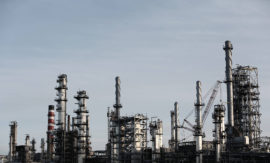Intended learning outcomes: Explain the need for lot traceability. Present reasons for loops in the product structure.
Customer tolerance time for chemical and pharmaceutical as well in for food products is minimal, and production time is often very long. Thus, the reason for order release is mostly a forecast. Long lead times make any planning system extremely susceptible to demand fluctuations. which can make incorrect predictions expensive. On the other hand, if there is a continuous usage on a production structure level, the prediction can be related directly to this level and does not have to be derived from the predictions for higher production structure levels. In this case, the reason for release is consumption, leading to a stock replenishment.
Large batch size, or lot size of an order: Some processes require large quantities to be produced to obtain the desired quality. Preparation and setup times (such as for cleaning reactors) are generally very long in the process industry, and, strictly speaking, the process start-up should be included in the setup time. Furthermore, the quantities required by the market are sometimes extremely large, as is the case in the food production industry, for example. Here the products are essentially mass produced.
Lot traceability is required by the governing regulations, but also due to product liability and problems associated with recalling a product. Control of lots, batches, or charges or even positions in lots serve this purpose. For further information on lot control, see Section 8.2.3. Lot control is also practiced for the following reasons:
- Active substances have a limited shelf life. If a batch results in various units, such as different drums of fluids, they must be labeled for identification (numbered individually in ascending order, for instance). For further processing, this procured or produced material must be identified by means of this relative position.
- To ensure uniform quality within a batch. This is frequently the case in the chemical and pharmaceutical industries and sometimes in the metal- or steel-working branches. It is particularly useful if the product characteristics change from one pass through the process to the next, or if products are produced by mixing or merging different materials, and the starting materials do not affect the characteristics of the end product in a linear manner. One example of this is the mixing of fuels, where the addition of high-octane materials does not have a linear effect on the increase in the octane level.
Another feature of the process industry is a product structure with loops. The chemical reactor example shown in Figure 8.1.1.1 might use catalyst[note 802] K to influence the reaction rate. Catalyst K does not get used up, and it becomes available again as soon as the reaction has ended. This creates the goods flow shown in Figure 8.1.3.1. As the output and input store for catalyst K are the same, a loop results.
Fig. 8.1.3.1 Product structure with loops.
Another example of a product structure with loops is when co-products are treated, and the recycled material reenters the processor as a starting material. In another case, amounts of product that have already been mixed in a mixing process stage can be returned to the process as often as is necessary to ensure the desired level of homogeneity. An undirected network of operations results. This is typical in the production of paints or pharmaceutical products.
Course section 8.1: Subsections and their intended learning outcomes

8.1.1 Divergent Product Structures, Primary Products, By-Products, and Waste Products
Intended learning outcomes: Differentiate between primary product, by-product, and waste product. Explain the manufacture of by-products in chemical production.

8.1.1b Manufacture of By-Products in Mechanical Production: Sheet Metal Working
Intended learning outcomes: Describe the manufacture of by-products in sheet metal working.

8.1.1c Manufacture of By-Products in Mechanical Production: Collets from a Steel Cylinder and Temporary Assembly
Intended learning outcomes: Disclose the production of collets from a steel cylinder as well as the “saucepan and lid” problem linked with temporary assembly.

8.1.2 High-Volume Line Production, Flow Resources, and Inflexible Facilities
Intended learning outcomes: Describe flow resources within a process stage. Explain the need for flexible capability (of the production equipment) in chemical production.

8.1.3 Large Batch Size, Lot Traceability, and Loops in the Order Structure
Intended learning outcomes: Explain the need for lot traceability. Present reasons for loops in the product structure.

8.1 Characteristics of the Process Industry
Intended learning outcomes: Explain divergent product structures and by-products. Describe high-volume line production, flow resources and inflexible facilities. Produce an overview on large batches, lot traceability, and loops in the order structure.
